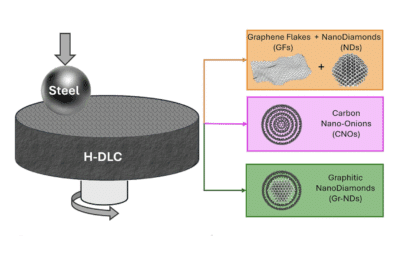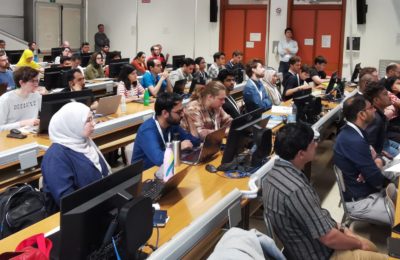A condensate of excitons was theoretically conjectured in the 1960s but has been challenging to pinpoint experimentally. A recent study coordinated by Massimo Rontani from Cnr Nano and David Cobden from the University of Washington present evidence that the two-dimensional bulk of monolayer tungsten ditelluride, WTe2, contains electrons and holes bound by Coulomb attraction that spontaneously form in thermal equilibrium.
The research now published in Nature Physics is also cited in the News and Views article ‘Topological excitons’ appeared on Nature Physics, commenting that Cnr Nano paper, together with a complementary study by a team from Princeton University, “represent evidence compatible with this state in a monolayer 2D material that also shows other interesting properties”.
For decades, the concept of an excitonic insulator has existed as a putative state of interacting electronic matter, but has eluded unambiguous experimental detection in a solid-state material. Excitonic insulator arise from the formation of bound electron-hole pairs (excitons) in semiconductors and is important, as understanding it would provide a conceptual advance for many-body physics. In their article Evidence for equilibrium exciton condensation in monolayer WTe2, Massimo Rontani, Daniele Varsano, Samaneh Ataei and Elisa Molinari from Cnr Nano, with colleagues from the University of Washington, University of California, University of Roma Tor Vergata and University of Modena and Reggio Emilia, tracked the conductivity and chemical potential of two-dimensional bulk of monolayer WTe2 as a function of doping. “We argue that what we found is incompatible with an independent particle picture and strongly indicates the presence of excitons in the equilibrium state. Our first-principles calculations of exciton dispersion and Bohr radius support this conclusion”, says Massimo Rontani.
Researchers reported more strongly insulating behaviour below a temparature of 100 K, suggesting that a charge-ordered state forms. “The observed absence of charge density waves in this state is surprising within an excitonic insulator picture, but our calculations show that it can be explained by the symmetries of the exciton wave function. Therefore, in addition to being a topological insulator, monolayer WTe2 exhibits strong correlations over a wide temperature range”, say the team of scientists.
As commented in the News and Views article by Vitor M. Pereira from the National University of Singapore, these results “suggest not only the potential materialization of an excitonic insulator but also could provide a setting where non-trivial electronic topology overlaps with strong electron–electron interactions, which is largely unexplored territory”.
Sun, B., Zhao, W., Palomaki, T. et al. Evidence for equilibrium exciton condensation in monolayer WTe2. Nat. Phys. (2021). https://doi.org/10.1038/s41567-021-01427-5
[IMAGE: Wavefunction of the lowest exciton with the centre-of-mass momentum q = 0. The plot shows the conditional probability distribution of the electron for the hole located at the red dot]



